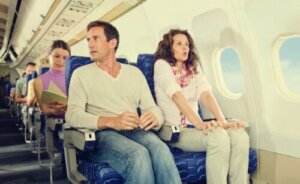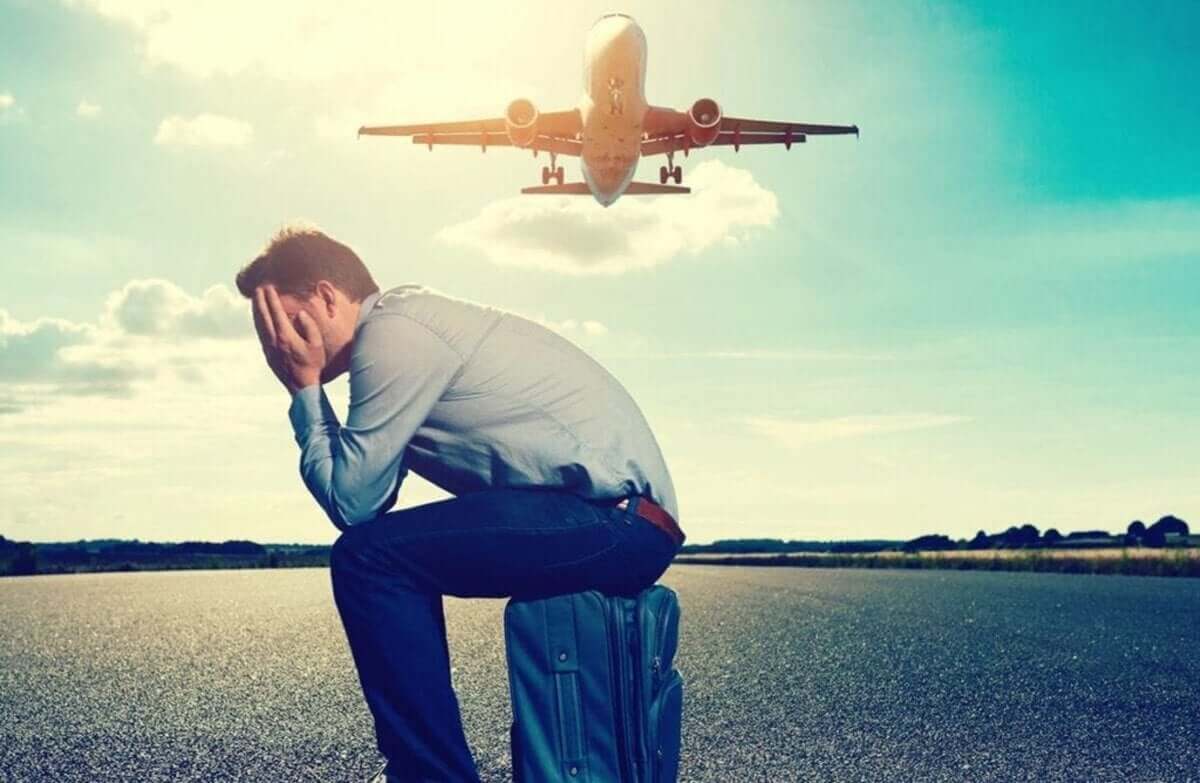Everything You Need to Know about Hodophobia, or Fear of Travel


Written and verified by psychologist Valeria Sabater
Hodophobia, or fear of travel, is a very particular type of psychological condition. It occurs in people who feel anguish simply because they are moving away from their comfort zone. They fear leaving their home, what is familiar to them, and what they can control. However, other phobias can also be present, such as the fear of flying or taking the car and having an accident.
The vast majority of people indeed associate travel with leisure and pleasure. However, some see the holiday period as a great source of stress.
These are days when travel, trips to visit family, moments to see new places, new cities and countries are common. This type of situation can generate high anxiety levels in many people.
Hodophobia or fear of travel: Symptoms and causes
Despite how unusual that may sound to us, there’s an unquestionable fact: phobias are the most common psychiatric condition.
All of us have fears, unique dimensions that we avoid and that may or may not condition our lives. However, phobias are in themselves a type of irrational fear and an intense form of anxiety that we cannot control, or that we don’t know how to control.
Some coping strategies and mechanisms can be put into practice. Let’s learn what this type of psychological condition consists of.
Hodophobia
In one of his letters to a colleague, Sigmund Freud explained that traveling caused him anxiety. However, we don’t know if what the father of psychoanalysis suffered from was a real phobia, because hodophobia or fear of travelling can be very limiting. It’s one thing to feel slight anxiety and another to be unable to leave the house.
This type of psychological disorder defines an irrational and paralyzing fear that is accompanied by intense symptomatology.
In other words, those who suffer from fear of traveling aren’t always even able to get on the train, sit in a plane or arrive at the hotel they have booked. This fact may completely condition the life of the one who suffers it. Imagine being unable to travel the world.
On the other hand, it should be noted that the DSM-5 (Diagnostic and Statistical Manual of Mental Disorders) classifies hodophobia or fear of travel as a specific type of phobia within anxiety disorders themselves. Therefore, let’s take a look at the symptoms described for their correct diagnosis.

You may also be interested in: Discover 6 Travelers’ Diseases
How does hodophobia or fear of travel manifest?
This type of phobia, like any other, manifests itself in various ways. Each person manifests their irrational fears in a particular way. Some do it more intensely, while others remain functional.
Nevertheless, there are a series of common emotional characteristics:
- Fear at the idea of leaving our home, of being away from what is comfortable and safe.
- Intense despair when getting in a car, on a plane, or a train.
- Fear of having an accident.
- Shame at the fact that others may perceive our phobia.
There are also cognitive symptoms, such as:
- The person can’t stop thinking about all the horrible things that can happen. They usually feel unable to control those negative and catastrophic thoughts.
- Their imagination leads to a loop of dire images: accidents, kidnappings, terrorist attacks.
- Blockage before concrete facts, like having to book a trip. Inability to focus attention on other things.
- Confusion and difficulties when having to make decisions.
Lastly, we also want to mention the physical manifestations of the disorder. Hodophobia or the fear of traveling is accompanied by countless physical signs that range from less to more serious:
- Dizziness and tachycardia
- Stomach pain and intestinal disorders at the idea of making a trip
- Sweating and dry mouth
Studies, such as those conducted at the University of California, for example, indicate that there’s a direct relation between phobias and panic attacks. That is, in the case of hodophobia, sometimes people suffer extreme situations in which the person comes to suffer these reactions to the idea of taking a trip.
Also read: Tips for Traveling Long Distances with a Baby
What causes hodophobia or fear of travel?
One thing we should be clear about phobias, in general, is that there isn’t always a clear trigger. Phobias of non-specific origin are quite common and hodophobia is one of them.
However, research works such as those carried out at the University of Marseille by Dr. René Garcia point out the following about the neurobiology of fear:
- The origin can be in traumatic events in the past. In the case of fear of travel, the person may have suffered an accident in the past or been the victim of a terrorist attack.
- There may also be a genetic or even family pattern. If our parents were also afraid of travel, planes or boats, then it’s very easy for this fear to be passed down.

How are these phobias treated?
The most suitable coping mechanism for all phobias is cognitive-behavioral therapy. Within this approach, the following resources are usually applied:
- The exposure technique: This consists of bringing the person closer to the phobic stimuli to work on the thoughts and emotional reactions.
- Cognitive restructuring: This assumes that the patient can detect negative and irrational thought patterns to transform them into healthier approaches.
- Emotional management: detecting paralyzing emotions, recognizing them, naming them, and transforming them into relaxed and satisfying states is a key tool.
- Breathing and relaxation techniques: Hodophobia or fear of travel can also benefit from appropriate breathing and relaxation techniques. These are complementary resources to cognitive-behavioral therapy itself.
- Virtual reality: Nowadays, virtual reality is an effective resource in treating phobias.
You can and should heal from phobias
In conclusion, any irrational fear can affect our quality of life. If you can’t get it under control, usually new phobias arise until you end up in a mental state where anxiety completely control you.
Let’s avoid reaching these limits: ask an expert for professional help.
All cited sources were thoroughly reviewed by our team to ensure their quality, reliability, currency, and validity. The bibliography of this article was considered reliable and of academic or scientific accuracy.
- Lange, I., Goossens, L., Bakker, J., Michielse, S., Marcelis, M., Wichers, M., … Schruers, K. (2019). Functional neuroimaging of associative learning and generalization in specific phobia. Progress in Neuro-Psychopharmacology and Biological Psychiatry, 89, 275–285. https://doi.org/10.1016/j.pnpbp.2018.09.008
- PitchaiahPodila, Sankara. (2019). HODOPHOBIA AND GENDER-A CASE STUDY. International Journal of Advanced Research, 7(1), 1109–1115. https://doi.org/10.21474/ijar01/8428
- Singh, Hemendra & Awayz, Hannah & Murali, Thyloth. (2017). An Unusual Case of Phobia: Hodophobia. The International Journal of Indian Psychology.
- Korstanje, Maximiliano. “De la fobia al miedo a viajar: explorando la psicología profunda del turista.” Papers de Turisme 56 (2015): 101-118.
- Wechsler, T. F., Mühlberger, A., & Kümpers, F. (2019). Inferiority or even superiority of virtual reality exposure therapy in phobias? – A systematic review and quantitative meta-analysis on randomized controlled trials specifically comparing the efficacy of virtual reality exposure to gold standard in vivo exposure in Agoraphobia, Specific Phobia and Social Phobia. Frontiers in Psychology. Frontiers Media S.A. https://doi.org/10.3389/fpsyg.2019.01758
- Delgado Reyes, Andrés Camilo, and Jessica Valeria Sánchez López. “Miedo, fobias y sus tratamientos.” Revista Electrónica de Psicología Iztacala 22.2 (2019): 798-833.
This text is provided for informational purposes only and does not replace consultation with a professional. If in doubt, consult your specialist.








